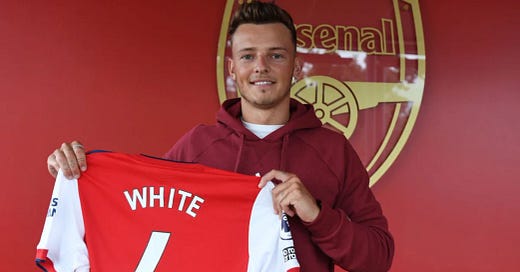Do Wages Win You Games?
The Premier League's biggest spenders aren't always its biggest winners
I recently published an article on wage disparity between the European leagues and concluded that the economics in European football are cooked.
I wanted to test this idea further to see if this high wage spend actually translates to higher league performance, at a distance, you'd think, but what about in the league itself? Everyone says it. Pundits, fans, and analysts all point to wage bills as the ultimate explanation for why some teams finish top four and others scrape by in mid-table.
But when I ran the numbers on the 2024/25 Premier League season, something interesting emerged. Wages aren't the magic bullet we think they are.
The data reveals a compelling narrative about the relationship between spending and performance. The disparity between wage rankings and final league positions exposes some stark underachievements, particularly among traditionally elite clubs.
Manchester United and Tottenham stand out as prime examples of clubs whose financial commitments far exceeded their on-field results. Both maintain wage bills consistent with their historical status as top-six mainstays, yet their performances this season fell dramatically short of expectations.
United’s case is particularly striking - their salary expenditure suggests championship ambitions, but finishing 17th represents a massive 13-position gap between investment and outcome. This disconnect became one of the season’s defining storylines.
Tottenham’s situation, while less extreme, still shows significant underperformance with a 10-position gap. For a club attempting to balance competitiveness with financial sustainability, such inefficiency posed real risks. Their eventual qualification for Champions League football despite this poor showing was remarkably fortunate. In hindsight, Levy’s decision to tell Ange to kick rocks, though difficult to accept, appears justified given the circumstances.
On the flip side, teams like Nottingham Forest and Brentford are massively outperforming their wage spend. Forest are punching nine positions above their payroll, while Fulham are doing similarly impressive work. These aren't accidents. They're evidence that wage spending alone doesn't determine where you finish.
When I shifted focus to goals scored instead of wages, the picture became much clearer.
The chart shows an almost perfect correlation between attacking output and points earned. The R² value of 0.797 means that nearly 80% of a team's league position can be explained by how many goals they score. Each additional goal is worth roughly 1.13 points over the course of a season.
This isn't revolutionary, of course, when you say it in simple terms, obviously the team that scores the most goals wins the most games, duh.
However, the closeness of the correlation is revealing. Liverpool are exactly where you'd expect based on their goal output. Arsenal, Chelsea, and Manchester City all cluster around the regression line. Even the underperformers make sense when viewed through this lens. Southampton's paltry goal tally explains their position at the bottom.
The correlation between goals and points is so strong because it captures something wages can't: efficiency, tactics, team chemistry, and execution. A well-coached team that creates chances and finishes them will beat a collection of expensive individuals who can't gel.
Football’s economics are broken. My analysis of European wage disparities makes that clear. The Premier League's financial dominance is reshaping the entire continental landscape. But within that warped system, the teams that succeed aren't necessarily the ones spending the most. They're the ones scoring the most.
Wages buy potential. Goals deliver points. The difference between the two explains why some clubs get exactly what they pay for, while others discover that money can't buy you finishing.
Obviously, this points model is very simple and just a one year view with a basic linear regression. The first lesson of stats is that correlation doesn't equal causation, but I'll do a 5 year view and see if we can build a proper model or maybe try and build an expected points model. Stay tuned.
Thanks for reading,
Steve







Looking forward to the 5 year comparison!